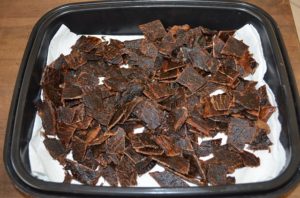In the Middle Ages and during the Renaissance, the preparation of meat was a delicate matter. Some well-heeled citizens had the animals slaughtered right in front of them, and watched them being prepared. This was the only way they could be sure that the freshness was reasonably good and that they would not contract bacteria from rotten meat. Later, methods were found to preserve freshly slaughtered or just killed animals without an elaborate cold chain. Knowing these methods is still helpful for people who like to prepare their own food.
Hunters invest a lot of money in their equipment.They go to Armeria or other shops and buy weapons, telescopes, night vision equipment and other things. See here:
And for what? That’s right, it’s not just for the excitement and thrill, but for the enjoyment. The enjoyment you experience when you hunt and prepare your own meat. It is simply inimitable. Therefore, we show how to keep the best quality of taste of your own meat products.
Pasteurisation & Vacuum
For example, if you had shot a wild animal while hunting, you were always fighting against time. As soon as a deer or wild boar was shot, it had to be taken home as quickly as possible. There it was either quickly boiled or roasted, because otherwise the poisonous bacteria would multiply at breakneck speed.
The French chemist Louis Pasteur triggered a revolution in the middle of the 19th century. He discovered that many organisms in food died at a temperature of about 60° Celsius. This did not kill all pathogens. However, their level was lowered to such an extent that people suffered no harm if the food was stored for a few more days in a reasonably cool environment. This saved millions of lives.
Today, some foods are pasteurised at 100°. That’s a similar temperature to what a medical thermal disinfector uses to sterilise instruments. This is because there are different risk classes in medicine. For some materials a thermal disinfector is enough, for others autoclaves come into play that use over 130° as temperature.
In any case, hunters or farmers can also treat fresh meat gently with an appropriate preparation. Afterwards, the portions can be sealed in foil in which a vacuum prevails. This also massively increases the length of time meat can be stored without danger.
Drying – smoking – salting
A long time ago, people discovered that Mother Nature offers at least a few ways to preserve meat.
One of these was smoking. In this process, the meat in cooked and raw form is hung over a fire that is generated by wood. From the smoke, substances are deposited on the surface that set chemical processes in motion. This cooks the meat. In addition, the layer kills bacteria and fungi.
Another possibility was to simply let the meat dry out. To do this, it was exposed to a temperature of about 40-50° for a few hours. The heat caused the water to escape. This deprives the microbes contained in the meat of their basis for life and most of them die. This is another way of keeping the finished product for a long time.
The method of curing or pickling in salt water works in a similar way. Salt has the property of changing the osmotic pressure of cells. When applied to meat, it literally sucks the liquid out of the cells. It also kills bacteria, which also consist of cells or are single-celled organisms.
All these methods can be implemented with relatively simple means, without highly complicated technology.

